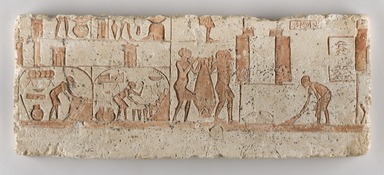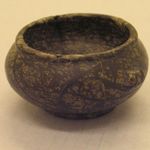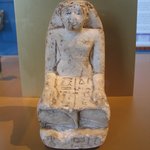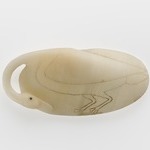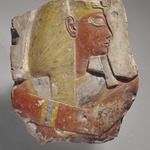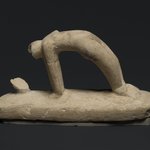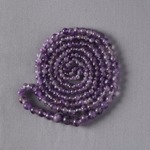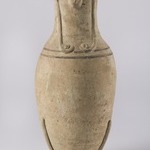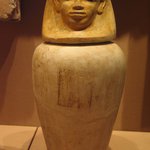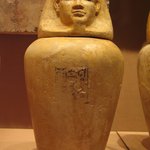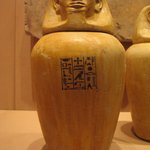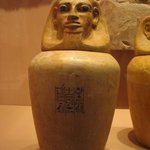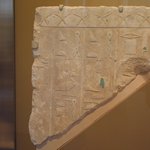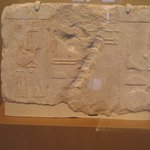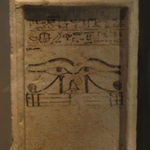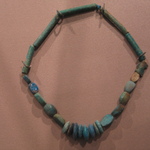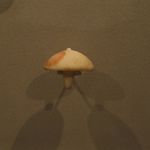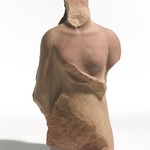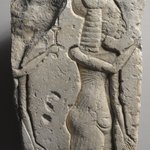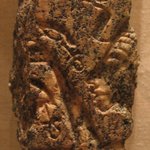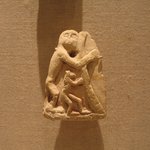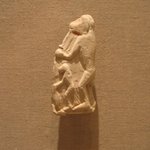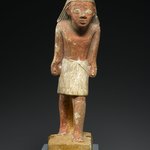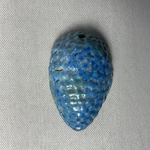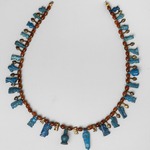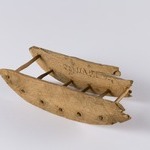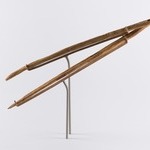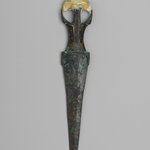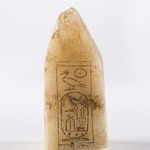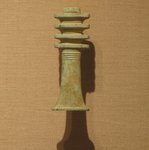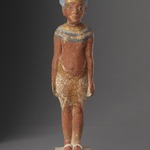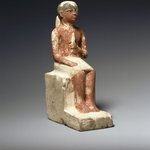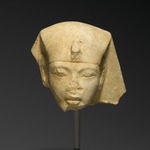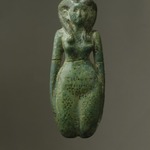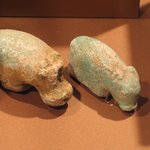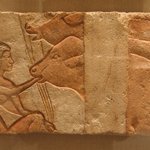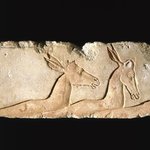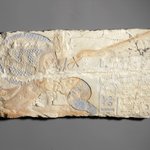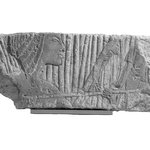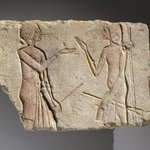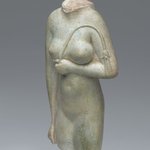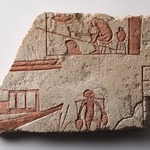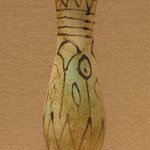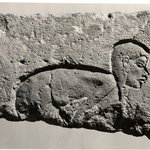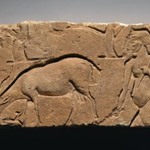Kitchen Scene
Egyptian, Classical, Ancient Near Eastern Art
Amarna art frequently provides the modern viewer with scenes of everyday life in an Egyptian palace. This relief presents a highly detailed glimpse of the activities in the palace kitchen. At the far left are two vaulted bakehouses. The worker in the bakehouse on the right shields his face from the flames rising from the fire. Above this scene are the fragmentary remains of the royal brewery. At the center of the relief two men carry a huge wine jar, suspended in a net from a pole, through an open double door into a court. Two details in the court are particularly noteworthy: the small cupboard containing five pairs of sandals, evidently the property of the kitchen help, and the workman who sweeps the floor of the court with a short-handled broom.
MEDIUM
Limestone, pigment
DATES
ca. 1352–1336 B.C.E.
DYNASTY
late Dynasty 18
PERIOD
New Kingdom, Amarna Period
DIMENSIONS
8 1/2 × 21 3/8 × 1 1/2 in. (21.6 × 54.3 × 3.8 cm)
(show scale)
ACCESSION NUMBER
62.149
CREDIT LINE
Charles Edwin Wilbour Fund
CATALOGUE DESCRIPTION
Limestone relief. Scene within house (or palace?). At right, servant sweeping yard which contains entrance, tiny garden and enclosure for sandals. Center, two servants carrying huge jar on pole. At left, curious domestic scenes, perhaps cooking.
Condition: Chipped along upper edge. Scattered chips on surface.
MUSEUM LOCATION
This item is not on view
CAPTION
Kitchen Scene, ca. 1352–1336 B.C.E. Limestone, pigment, 8 1/2 × 21 3/8 × 1 1/2 in. (21.6 × 54.3 × 3.8 cm). Brooklyn Museum, Charles Edwin Wilbour Fund, 62.149. Creative Commons-BY (Photo: Brooklyn Museum, 62.149_PS20.jpg)
IMAGE
overall, 62.149_PS20.jpg. Brooklyn Museum photograph, 2024
"CUR" at the beginning of an image file name means that the image was created by a curatorial staff member. These study images may be digital point-and-shoot photographs, when we don\'t yet have high-quality studio photography, or they may be scans of older negatives, slides, or photographic prints, providing historical documentation of the object.
RIGHTS STATEMENT
Creative Commons-BY
You may download and use Brooklyn Museum images of this three-dimensional work in accordance with a
Creative Commons license. Fair use, as understood under the United States Copyright Act, may also apply.
Please include caption information from this page and credit the Brooklyn Museum. If you need a high resolution file, please fill out our online
application form (charges apply).
For further information about copyright, we recommend resources at the
United States Library of Congress,
Cornell University,
Copyright and Cultural Institutions: Guidelines for U.S. Libraries, Archives, and Museums, and
Copyright Watch.
For more information about the Museum's rights project, including how rights types are assigned, please see our
blog posts on copyright.
If you have any information regarding this work and rights to it, please contact
copyright@brooklynmuseum.org.
RECORD COMPLETENESS
Not every record you will find here is complete. More information is available for some works than for others, and some entries have been updated more recently. Records are frequently reviewed and revised, and
we welcome any additional information you might have.
Are the red markings that highlight the images in the relief put there later or when they were originally made?

It is all original. Most reliefs, were brightly painted in Ancient Egypt. But unlike the stone its painted on, fragile paint pigments don't always to survive well over thousands of years, so they come to us lacking much of their original bright paint.
So these colors probably represent their skin color?
Good question: Skin color was indicated with colors, yes, with men typically painted red, and women painted yellowish-white. That doesn't help us pinpoint what actual Egyptians looked like because this was clearly just a convention - real Egyptian women weren't paper-white, nor were the men really bright red.
